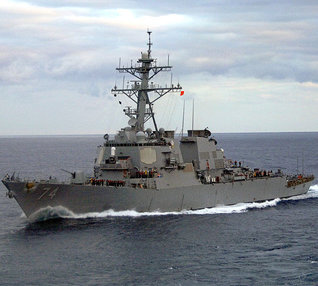I've been a broadcast meteorologist on television since the early 1990's. Happy to answer any questions about the weather or local TV news. Yes, I often wear sneakers on set just out of view of the camera.
Hi, Courtnee! I first studied Radio-TV-Film at Texas Christian University, then Broadcast Meteorology at Mississippi State. I think you might have some trouble getting into weather with a geology degree. You might ask for some advice and a visit from a local television station and/or National Weather Service office (weather.gov). Good luck!
Pretty easily detected in thunderstorms with Doppler radar. You are correct, we still use spotters heavily. Radar usually sees rotation above ground in the storm. Since the earth is round it curves away from the radar beam which is why the spotters are so critical providing "ground truth". Warning times have increased over the years and will continue, especially with new radar technology coming over the next few years.
Great question. The bottom of the cloud is the point where the water vapor in the warmer rising air cools to the point where it condenses (kind of like the condensation out the outside of a glass of water with ice) and turns into a visible water droplet. The darker gray is an area of higher moisture and less sunlight gets through. Happy flying!
Great questions. I'll answer as a television meteorologist. A National Weather Service meteorologist or someone in research or private industry would have much different answers.
1. The most difficult thing lately is the increasing number of places to put weather information and the 24 hour nature. TV, website and social media mean there is little "off" time.
2. Good time management, the 5:00 news starts right at 5:00! Able to explain things simply. Enjoy visiting with people.
3. There are a number of good colleges that offer degree programs in Meteorology.
4. Good math and science skills/interest are a big help.
Thanks!
Navy Officer (Former)
 Just how educated is the typical US military serviceman?
Just how educated is the typical US military serviceman?
School Bus Driver
 If your bus is in an accident that was ruled your fault, would you lose your job?
If your bus is in an accident that was ruled your fault, would you lose your job?
Videogame Reviewer
 Pick one: Nintendo Ice Hockey, NHL ‘94, or Blades of Steel?
Pick one: Nintendo Ice Hockey, NHL ‘94, or Blades of Steel?
Possible and does, Joe! http://www.nhc.noaa.gov/?epac
Creative thinking. Probably a huge cost to transporting that water but even if you could get it there the prevailing atmospheric winds would carry the water vapor to east, away from the areas that need it. Keep thinking!
My guess is that you were under some type of "convective" event like a thunderstorm and the rain gauges that the reports came from were not under that event. With some thunderstorms the distances in between no rain and heavy rain can be quite small. Thanks!
-OR-
 Login with Facebook
Login with Facebook (max 20 characters - letters, numbers, and underscores only. Note that your username is private, and you have the option to choose an alias when asking questions or hosting a Q&A.)
(A valid e-mail address is required. Your e-mail will not be shared with anyone.)
(min 5 characters)
By checking this box, you acknowledge that you have read and agree to Jobstr.com’s Terms and Privacy Policy.
-OR-
 Register with Facebook
Register with Facebook(Don't worry: you'll be able to choose an alias when asking questions or hosting a Q&A.)